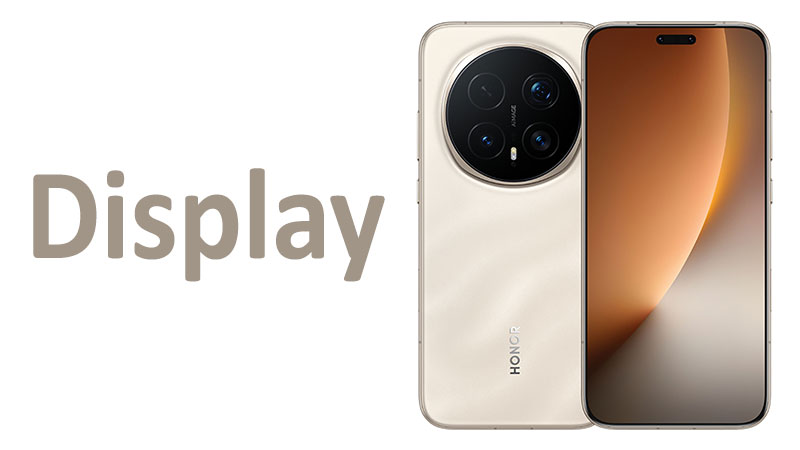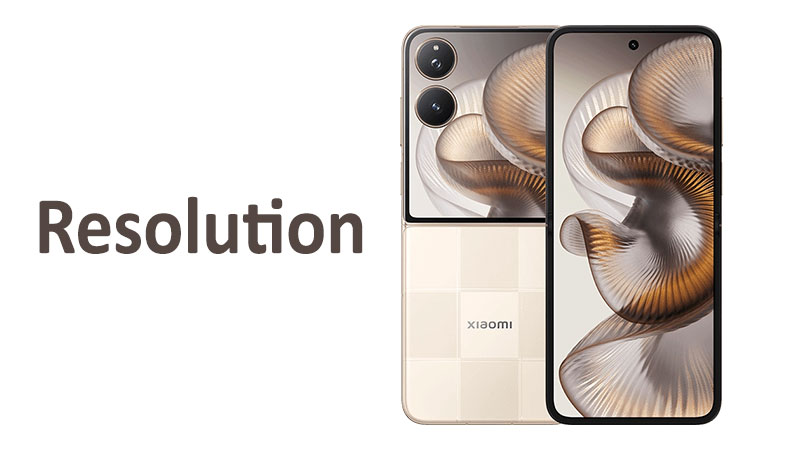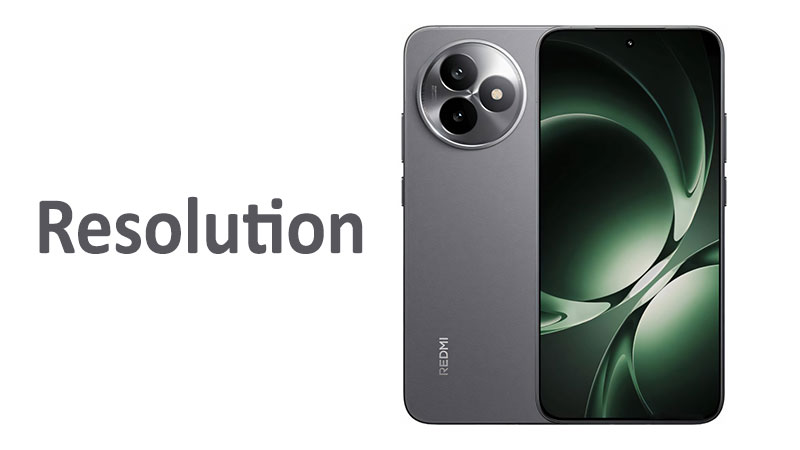The Honor Magic 8 Pro Display stands out as a flagship feature for this new device. It is often the first thing a user notices about a modern smartphone. The quality of the screen is crucial for all daily interactions. This comprehensive review dives deep into the specifications, performance, and overall quality of the Honor Magic 8 Pro’s screen technology. We will explore how these features impact the user experience. We will also analyze the key technology breakthroughs present in this impressive panel. This detailed examination helps both technical readers and general consumers understand the true value proposition.
Detailed Display Technology Review
The Honor Magic 8 Pro display is a powerhouse of modern screen technology. It incorporates several advanced features designed for both performance and eye comfort. Understanding these core specifications is the first step to appreciating the phone’s visual capabilities. We will break down each major component to give you a full picture.
LTPO OLED Panel Technology
The Honor Magic 8 Pro uses an LTPO OLED panel. LTPO stands for Low-Temperature Polycrystalline Oxide. This technology is superior to traditional LTPS (Low-Temperature Polysilicon) technology. The primary benefit of LTPO is its dynamic refresh rate control.
What LTPO Means for You
LTPO allows the display to adjust its refresh rate based on the content. If you are reading a static e-book, the display can drop to 1Hz. This saves a significant amount of battery power. Conversely, when you are scrolling or gaming, the refresh rate instantly jumps up to the maximum 120Hz. This seamless transition is incredibly efficient. Older OLED screens struggled to achieve this level of variable refresh rate.
Comparison to Competitors
Most top-tier competitor phones now use LTPO panels. However, Honor’s implementation is exceptionally refined. The efficiency gains are often measured in hours of screen-on time. Compared to the previous Magic series model, the LTPO integration is smoother and more responsive. Buyers should know this technology is key to balancing high performance with all-day battery life. The LTPO panel is a non-negotiable feature for any 2024 flagship device.
Pros and Cons of LTPO
A major pro is the exceptional power efficiency. Another significant benefit is the smooth, fluid motion at high refresh rates. A minor con might be the initial higher manufacturing cost of the technology. This cost is reflected in the phone’s overall price tag. However, the energy savings justify the investment over the device’s lifespan.
Screen Size and Aspect Ratio
The Honor Magic 8 Pro screen measures 6.71 inches diagonally. This provides a generous viewing area for media consumption. The total screen surface area is approximately 108.3 cm². This size strikes a balance between immersion and comfortable one-handed use. It is a large screen, but the overall phone size is managed well.
Screen-to-Body Ratio Analysis
The device boasts an impressive screen-to-body ratio of around 89.6%. This high ratio means the bezels surrounding the display are extremely thin. Minimal bezels maximize the effective viewing space. This design choice contributes to a more immersive and modern aesthetic. The nearly edge-to-edge display makes movies and games truly pop.
Buyer Information on Size
A 6.71-inch display is ideal for media enthusiasts. It is perfect for watching high-resolution videos or playing graphics-intensive mobile games. Users with smaller hands should test the phone’s ergonomics first. While manageable, it is a large device. The curved edges help to make the device feel slightly narrower in the hand. This curved design improves the perceived thinness of the phone.
Resolution and Pixel Density
The Honor Magic 8 Pro features a high resolution of 1256 x 2808 pixels. This resolution delivers stunning clarity and sharpness. The display maintains a 20:9 aspect ratio. This cinematic ratio is excellent for modern video content. It also allows for more vertical screen real estate for browsing.
Pixel Per Inch Density
The pixel density of this display is approximately 458 pixels per inch (ppi). This is a very high density. At this level, individual pixels are virtually indistinguishable to the human eye. Images and text appear incredibly sharp, clear, and detailed. This density ensures that even the smallest fonts are crisp and legible.
Comparing Resolution
The 1256 x 2808 resolution is slightly non-standard compared to typical 1440p displays. However, the practical difference is negligible. Honor optimizes this specific resolution for panel efficiency and clarity. It maintains flagship-level sharpness without unnecessary power draw. Compared to a standard 1080p panel, the increase in detail is immediately noticeable. This superior resolution enhances the enjoyment of all types of content.
Clarity Pros and Cons
A significant pro is the photographic-level detail and smoothness of text. Another benefit is the immersive viewing experience. A potential minor con is that running games at this high native resolution requires powerful processing. The phone’s processor handles this demand effectively, however. The high ppi density guarantees a premium visual experience every time you use the device.
Ultra-High Brightness Levels
The display of the Honor Magic 8 Pro achieves staggering brightness levels. It reaches 1800 nits in High Brightness Mode (HBM). This is crucial for outdoor visibility. Furthermore, it boasts an incredible peak brightness of 6000 nits. This peak is achieved in specific, small areas when viewing HDR content.
HBM for Sunlight Readability
The 1800 nits HBM ensures the screen remains perfectly legible even under direct midday sunlight. This is a crucial feature for any user who spends time outdoors. Many older phones struggle to break the 1000-nit mark reliably. The Honor Magic 8 Pro overcomes this limitation with ease. Screen washout is virtually a non-issue with this flagship device.
6000 Nits Peak Brightness Explained
The industry-leading 6000 nits peak brightness is transformative for HDR content. This high peak brightness creates extraordinary contrast between light and dark areas. Sunsets look blindingly realistic. Explosions on screen appear genuinely dazzling. This brightness level maximizes the impact of supported HDR video formats. It significantly improves the dynamic range of video content.
Comparison to Previous Models
This 6000-nit peak is a monumental leap from the previous Honor Magic generation. It even surpasses most current competitor flagships. Such high luminance is a major selling point for cinema enthusiasts. It means that the visual presentation is closer than ever to a professional reference monitor. This brightness capability is truly a defining specification of the Honor Magic 8 Pro display.
4320Hz Ultra-High Frequency PWM Dimming
Pulse Width Modulation (PWM) dimming is used by OLED screens to control brightness. At low brightness, a low PWM frequency can cause screen flicker. This flicker can lead to eye strain, headaches, and general discomfort for sensitive users. The Honor Magic 8 Pro addresses this with a market-leading solution.
The Flicker Solution
The display features an ultra-high 4320Hz PWM dimming frequency. This is one of the highest frequencies currently available in any smartphone. The human eye cannot perceive flicker at such a high frequency. This technology makes the phone much more comfortable to use in low-light environments. It dramatically reduces the risk of eye fatigue.
Eye Comfort for Buyers
For buyers concerned about eye health, this is a killer feature. It transforms the experience of using the phone before bed or in dark rooms. The high PWM frequency is often preferred over DC dimming methods. High-frequency PWM provides accurate color reproduction even at low brightness. This feature demonstrates Honor’s commitment to advanced user health features. It makes the Magic 8 Pro a leading choice for display comfort.
Comparison and Importance
Many competing flagships offer lower PWM frequencies, often in the 1000-2000Hz range. Some older phones still use frequencies below 500Hz. The 4320Hz rate is a massive improvement over these systems. It provides peace of mind for users who are prone to visual discomfort. This specification is arguably as important as the resolution or refresh rate for long-term use. The comfortable viewing experience is consistent across all brightness levels.
120Hz Adaptive Refresh Rate
The LTPO panel enables the use of an adaptive 120Hz refresh rate. The refresh rate dictates how many times the screen updates per second. A 120Hz rate means the screen refreshes 120 times every second. This results in incredibly smooth motion and responsiveness.
Impact on Gaming and Scrolling
The 120Hz refresh rate is most apparent during fast motion. Scrolling through social media feeds becomes buttery smooth. Gaming benefits greatly from the reduced input lag and clearer on-screen action. High frame rate mobile games feel more immediate and competitive. The visual feedback is instantaneous and satisfying.
Adaptive Capability Detail
As mentioned with LTPO, the 120Hz rate is not constant. It adjusts dynamically down to 1Hz or 10Hz when viewing static images. This dynamic adjustment is key to the phone’s battery longevity. A fixed 120Hz screen would drain the battery rapidly. The adaptive system ensures you only use the power required for the task at hand. This efficiency is a core strength of the Honor Magic 8 Pro display system.
Buyer Advice on 120Hz
Buyers should always ensure the 120Hz setting is enabled in the phone’s display settings. Sometimes, devices ship with a default setting to save battery life. Using the full 120Hz refresh rate is essential to experiencing the phone’s fluidity. Once you use a 120Hz display, going back to 60Hz feels noticeably sluggish. It truly elevates the premium feel of the device.
Color Depth and HDR Standards
The Honor Magic 8 Pro display is a 1 Billion Color panel. This refers to the screen’s ability to render 10-bit color depth. Standard screens typically only handle 16.7 million colors (8-bit). The increased color depth allows for far smoother gradients and richer, more lifelike color reproduction.
1 Billion Colors Explained
The difference between 8-bit and 10-bit color is vast. It means the display can show over a billion different color shades. This eliminates color banding, especially in challenging scenes like sunrises or deep space images. Professional photographers and video editors will appreciate this fidelity. The enhanced color accuracy makes the phone an excellent tool for content review.
Dolby Vision and HDR Vivid Support
The display supports both Dolby Vision and HDR Vivid standards. Dolby Vision is one of the industry’s premier high dynamic range formats. It uses dynamic metadata to optimize picture quality scene by scene. This results in unmatched contrast and color. HDR Vivid is another high-quality HDR format, potentially offering localized optimizations.
Why Dual HDR Support Matters
Supporting multiple high-end HDR formats ensures compatibility with the widest range of premium streaming content. Netflix, Disney+, and other services often utilize Dolby Vision. Viewing this content on the Honor Magic 8 Pro is a genuinely transformative experience. The combination of 6000 nits peak brightness and 10-bit color depth delivers visual perfection. This extensive HDR support is vital for any consumer who prioritizes streaming quality.
Protection: Giant Rhino Glass
Flagship display technology requires flagship protection. The Honor Magic 8 Pro is protected by what the company calls Giant Rhino Glass. This proprietary solution is designed to offer superior durability and drop resistance. It is engineered to keep the expansive screen safe from everyday hazards.
Durability and Buyer Considerations
Screen protection is often overlooked but is extremely important. A premium screen replacement can be costly. Giant Rhino Glass promises exceptional scratch resistance from keys and coins. More importantly, it provides enhanced protection against accidental drops. Buyers should still consider a case for overall device safety. However, the advanced glass offers a strong baseline defense.
Comparison to Industry Standards
While the specific chemical composition is proprietary, Giant Rhino Glass competes directly with the latest generations of Corning Gorilla Glass. Early reports suggest it provides class-leading resistance to impact. This protection is necessary given the size and curved nature of the display. The robust glass minimizes the risk of hairline cracks from minor bumps. This adds peace of mind for the consumer.
Aesthetics and Design
The display features subtle, yet significant, curvature on all four sides. This quad-curve design enhances the visual flow. It also makes swiping in from the edges feel more natural. The punch-hole cutout for the front-facing camera is small and unobtrusive. The camera cutout is positioned in the upper center. This design ensures that the viewing area remains largely uninterrupted. The minimal bezel design, combined with the curves, creates a truly striking device profile.
Summarized Pros and Cons for Buyers
The Honor Magic 8 Pro display offers a compelling set of advantages. However, it also has a few minor drawbacks. Reviewing these points will aid in making an informed purchasing decision.
Key Display Pros
The 6000 nits peak brightness is simply outstanding. The 4320Hz PWM dimming ensures superior eye comfort. This high frequency drastically reduces screen flicker in low light. The LTPO technology provides adaptive 1Hz-120Hz refresh rates. This balances extreme smoothness with excellent battery life. The 10-bit color depth and HDR support guarantee cinema-grade picture quality. Finally, the Giant Rhino Glass provides robust physical protection for the panel.
Key Display Cons
The 6.71-inch size might be too large for some users’ preferences. The quad-curve design, while aesthetically pleasing, can sometimes lead to accidental touches. This requires a small adjustment period for new users. The proprietary Giant Rhino Glass is not as widely documented as Gorilla Glass. This can make specific durability comparisons slightly difficult. These minor points are easily outweighed by the display’s technical excellence.
Conclusion: Making an Informed Choice
The Honor Magic 8 Pro display review confirms its status as a technological marvel. The panel excels across every major metric. It is visually stunning, remarkably bright, and exceptionally easy on the eyes. The combination of LTPO, 120Hz, and the extreme 6000-nit peak brightness sets a new industry benchmark. Furthermore, the 4320Hz PWM dimming is a huge win for user comfort and health. Buyers looking for the absolute best screen quality should seriously consider this device. It is a premium viewing platform for all forms of digital content. The Honor Magic 8 Pro delivers a truly top-tier visual experience.
Frequently Asked Questions (FAQ)
1. What is the main benefit of the 4320Hz PWM dimming?
The main benefit is reduced eye strain and flicker. It makes the screen much more comfortable to view in dark environments. The high frequency is imperceptible to the human eye.
2. Is the Honor Magic 8 Pro screen resolution 4K?
No, the resolution is 1256 x 2808 pixels. This is a very sharp resolution, but it is not a 4K display. It provides approximately 458 ppi density.
3. How does LTPO help with battery life?
LTPO allows the screen to dynamically switch its refresh rate. It can drop from 120Hz down to 1Hz when viewing static content. This saves significant power when the display is active.
4. What content benefits from the 6000 nits peak brightness?
High Dynamic Range (HDR) content benefits most from 6000 nits. This includes movies and shows streaming in Dolby Vision or HDR Vivid. It creates incredibly bright highlights and deep contrast.
5. What is Giant Rhino Glass?
Giant Rhino Glass is Honor’s proprietary, high-strength protective cover. It is designed to offer exceptional resistance against scratches and accidental damage. It keeps the high-quality OLED panel safe.



